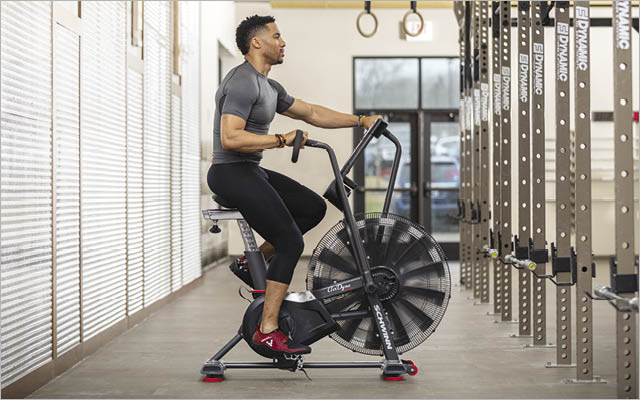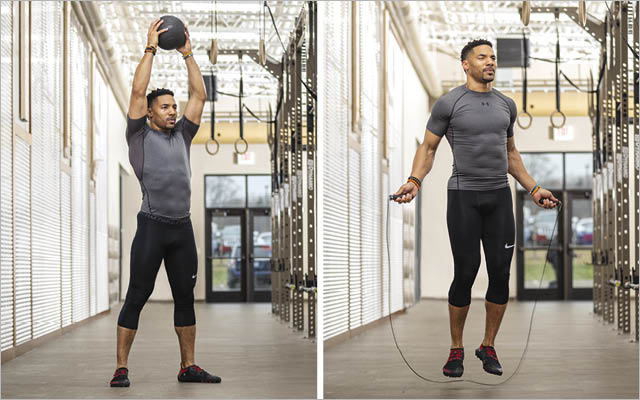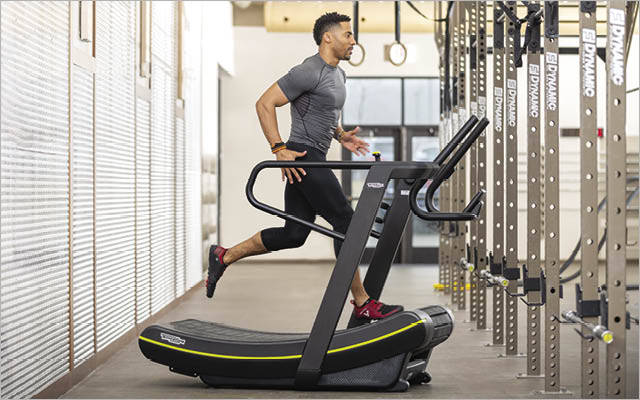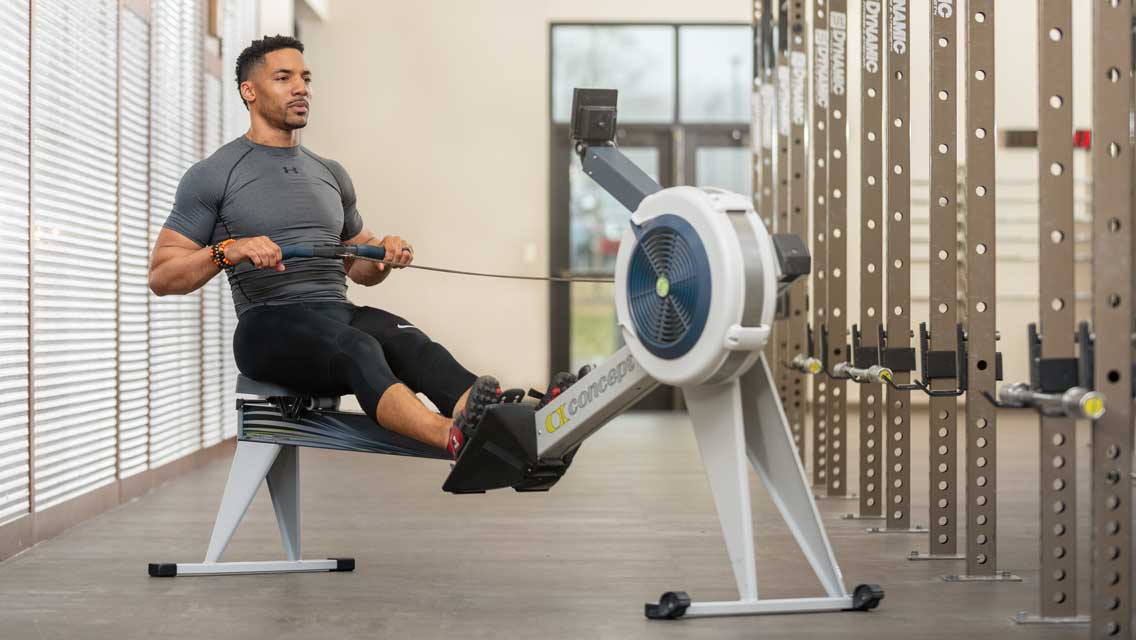Recovering after exercise is a key to long-term fitness, says trainer Joel Jamieson.
“To maximize results, the most important thing you can do is to shift into the recovery state within 12 to 24 hours following a high-intensity session.” Jamieson recommends the following the following recovery workout.
The Workout
- Take 30 to 40 minutes to do a combination of these moves, sticking with lower volume and moderate intensity.
- Perform the day after a high-intensity session or when stress is high.
Recovery Breathing
Restores full range of motion in the rib cage and upper back during the breath cycle.

Perform three sets of five slow reps.
Full Instructions
- Assume an all-fours position, hands under your shoulders, knees under your hips.
- Inhale deeply, lengthening your arms and spreading your shoulder blades as much as possible.
- Exhale fully, keeping your shoulder blades wide and tucking your pelvis under as you do so.
- Perform three sets of five slow reps.
Too easy? Perform the same movement with the balls of your feet on the floor and your knees lifted about an inch off the floor.
Cardio-Machine Tempo Intervals
Encourages blood flow in the lower body and improves your ability to transition easily from a higher-effort to lower-effort state.

Perform a low-impact form of cardio, such as a stationary bike, row machine, elliptical machine, or stepmill for five to 10 minutes.
Full Instructions
- Select a low-impact form of cardio, such as a stationary bike, elliptical machine, or stepmill. Set it at a low- to medium-intensity pace, the equivalent of an easy jog.
- For five to 10 minutes, complete:
- 60 seconds at a recovery pace (a brisk walk or slow jog).
- Raise the intensity level to about a seven out of 10 for 10 to 15 seconds.
- Alternate between recovery and midlevel intensity for the entire work period.
No equipment? Hike or jog at a lower intensity.
Strength-Based Cardio Intervals
Encourages blood flow, lubricates joints, and improves your ability to transition into the recovery state.

Repeat this cycle three to five times.
Full Instructions
- Grab a medicine ball and a jump rope or a pair of battle ropes, and find some space to walk or jog.
- For 10 to 15 seconds, perform med-ball slams, throwing the ball to the floor with about 70 percent of your maximum effort.
- Walk or jog for 45 to 60 seconds.
- Jump rope or perform battle-rope slams as hard as possible for 10 to 15 seconds.
- Walk or jog for 45 to 60 seconds.
- Repeat the above cycle three to five times.
No equipment? Do body-weight moves: squats, tuck jumps, walking lunges, burpees, split jumps.
Medium-Intensity Cardio
Builds aerobic capacity, which supports and enhances recovery after hard exercise.

Perform for five to 10 minutes.
Full Instructions
- Select a low-impact form of cardio different from the one you used previously and set at a low- to medium-intensity pace.
- Complete five to 10 minutes continuously at 72 to 88 percent of your maximum heart rate, or an RPE of 5 to 6.
Rack Deadlift
Stimulates the central nervous system and promotes the natural release of the recovery-supporting hormones testosterone and human growth hormone (HGH).

Perform three sets of two or three reps at a moderately heavy weight, about 85 to 90 percent of your maximum deadlift weight.
Full Instructions
- Stand inside a power rack and set the support bars so that a barbell placed across them is at knee height.
- Load the bar with a moderately heavy to heavy weight and stand with the bar against the fronts of your knees.
- Bend at the knees and hip joints and take an overhand, shoulder-width grip on the bar.
- Keeping your arms straight, your lower back in its natural arch, your chest up, and your head aligned with your spine, slowly stand fully upright.
- If possible and practical, drop the barbell back to the support bars. If not, lower the bar by bending at the hips and knees, keeping your lower back in its natural arch.
- Perform three sets of two or three reps at a moderately heavy weight, about 85 to 90 percent of your maximum deadlift weight.
Cool-Down and Recovery Breathing
Slows the heart rate and supports your rest state.

Cool Down: Select a low-impact form of cardio from the list above and set at a low-intensity pace. Complete three easy minutes.
Then, repeat two sets of five slow reps of Recovery Breathing.
This article originally appeared as “Recover Like a Pro.”




This Post Has 0 Comments